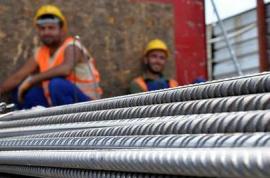Analytics, Employment, EU – Baltic States, Legislation, Markets and Companies
International Internet Magazine. Baltic States news & analytics
Saturday, 20.04.2024, 13:33
Workers mobility: positive impact of Bulgarian and Romanian workers on EU economy
 Print version
Print version |
|---|
Estimates also show a positive impact of the free movement of Romanian and Bulgarian workers on the EU's long-term GDP with an increase by about 0,3% for EU-27 (0.4% for EU-15). Studies show too that there has been no significant impact on unemployment or wages of local workers in receiving countries: in the EU-15 wages are on average only 0,28% lower they would have been without mobility of the EU-2. The report also highlights that there is no evidence of a disproportionate use of benefits by intra-EU mobile EU citizens and that the impact of recent flows on national public finances is negligible or positive.
Speaking in Vienna, László Andor, EU Commissioner for Employment, Social Affairs and Inclusion underlined the positive impact of mobility. "Moving between countries offers real opportunities and economic benefits for both the host countries and the EU as a whole. We see that geographical mobility very much depends on the trends of the economy and where the jobs are".
The Commissioner also expressed his strong desire to see all labour market restrictions lifted adding: "Restricting the free movement of workers in Europe is not the answer to high unemployment. What we need to do is really to focus our efforts on creating new job opportunities".
Reference: IP/11/1336, 11 November 2011.
Post-enlargement mobility may have had some economic and social costs for the receiving countries as well as for the sending countries that lose productive capacity. However, the Commission believes that while a part of these costs might be temporarily reduced by restricting labour mobility, in the longer term, labour market imbalances need to be addressed through specific policies. Evidence shows that the transitional measures have had a limited effect on the distribution of EU mobility and that flows are influenced more by factors like labour demand or language skills. The experience of the 2004 enlargement has also shown that restricting the free movement of workers can have negative effects, such as a rise in undeclared work.
Positive signs
The main destination for movers form Bulgaria and Romania have been Italy and Spain; data suggests that, at the end of 2010, twice as many Bulgarians and Romanians (total about 2,9 million) were residing in the EU-25 compared to 2006.
At the same time, in relative terms, EU-2 nationals resident in an EU-25 Member State only represent 0,6 % of the total EU-25 population. The highest share is in Cyprus (4,1%), Spain (2,2 %) and Italy (1,8 %).
In addition, the EU-2 employment rate (63%) is close to that of the EU-25 (65%). However, since the economic downturn, recently arrived EU-2 nationals have found it more difficult to find a job: around 16% were out of work in 2010, compared to 9% in 2007. What is clear is that recent EU-2 movers have played a very minor role in the labour market crisis which is a direct consequence of the financial and economic crisis, as well as structural labour market problems.
The Commission report will serve as the basis on which the Council will carry out a review of how the transitional arrangements on free movement of Bulgarian and Romanian workers have worked in practice.
Background
The 2005 Act of Accession allows the EU-25 to temporarily restrict the free access of workers from Bulgaria and Romania to their labour markets in order to prepare for full labour mobility in the EU. The overall transitional period of seven years is divided into three phases:
First 2 years: the national law of the other Member States regulates the access of workers from Bulgaria and Romania to their labour markets.
Following 3 years: Member States can extend their national measures upon notification to the Commission before the end of the first phase, otherwise EU law granting free movement of workers applies.
Last 2 years: a Member State maintaining national measures at the end of the second phase may, in the event of serious disturbances of its labour market, or threat thereof and after notifying the Commission, continue to apply these measures until the end of the seven-year period following the date of accession.
Within the 7-year period, a safeguard clause allows a Member State to re-introduce restrictions if there are serious disturbances on the labour market, or threat thereof.
The current second phase of the transitional arrangements will end in December 2011. Ten Member States (BE, DE, IRL, FR, IT, MT, NL, AT, LU, UK) currently still restrict the access of workers from Bulgaria and Romania. They can maintain restrictions after 31 December 2011 only if they notify the Commission by 31 December 2011 of a serious disturbance (or threat thereof) to the labour market.
Romanian workers also face restrictions to access the Spanish labour market after the European Commission approved Spain's request to restrict its labour market to Romanian workers until 31 December 2012 due to serious disturbances on its labour market. (IP/11/960). The transitional arrangements will irrevocably end on 31 December 2013.
For more information:
See the EC Report on the functioning of the Transitional Arrangements on Free Movement of workers from Bulgaria and Romania:
http://ec.europa.eu/social/BlobServlet?docId=7204&langId=en and
http://ec.europa.eu/social/main.jsp?langId=en&catId=457, as well as MEMO/11/773
From Commission’s press release








 «The Baltic Course» Is Sold and Stays in Business!
«The Baltic Course» Is Sold and Stays in Business!

